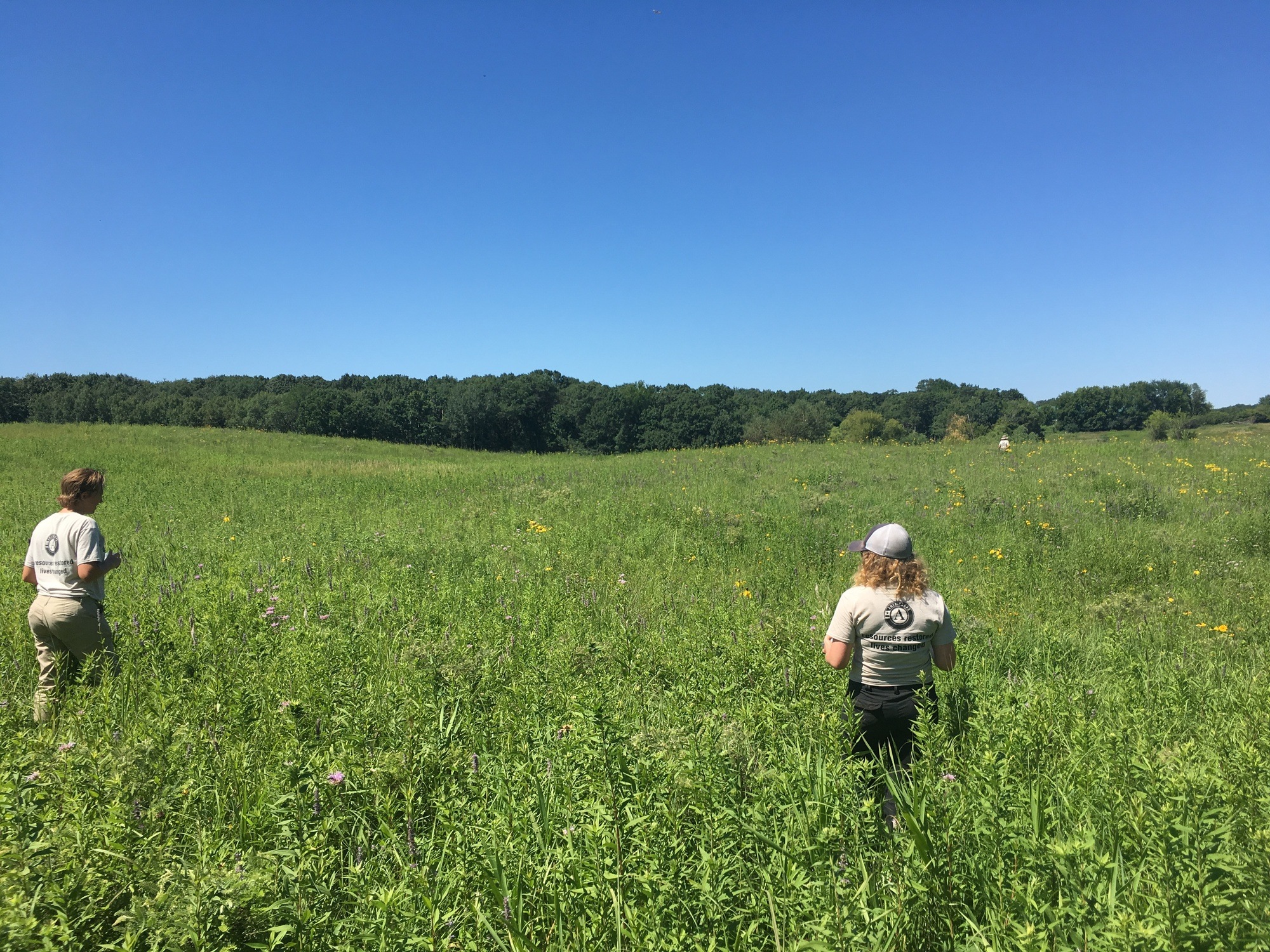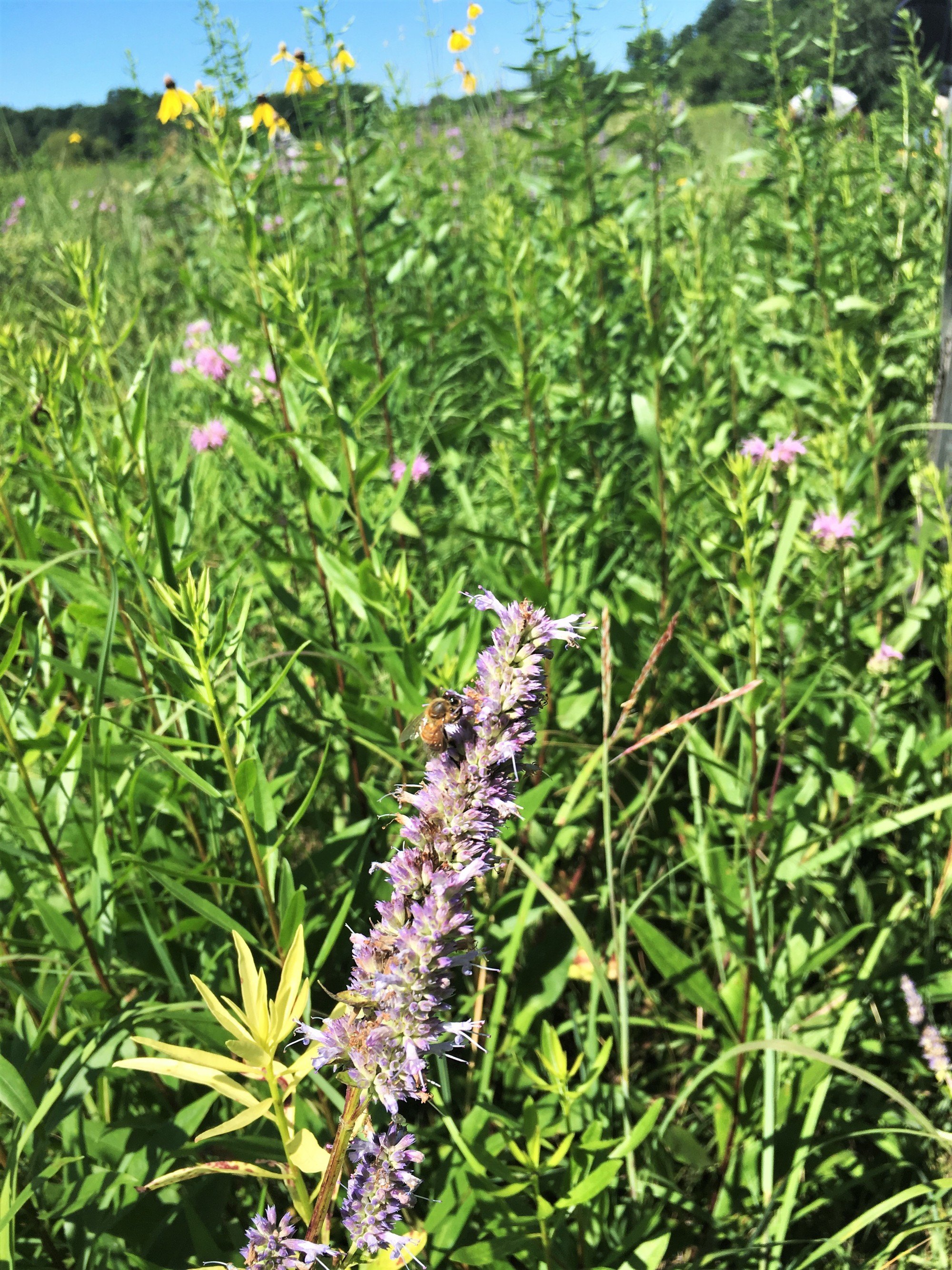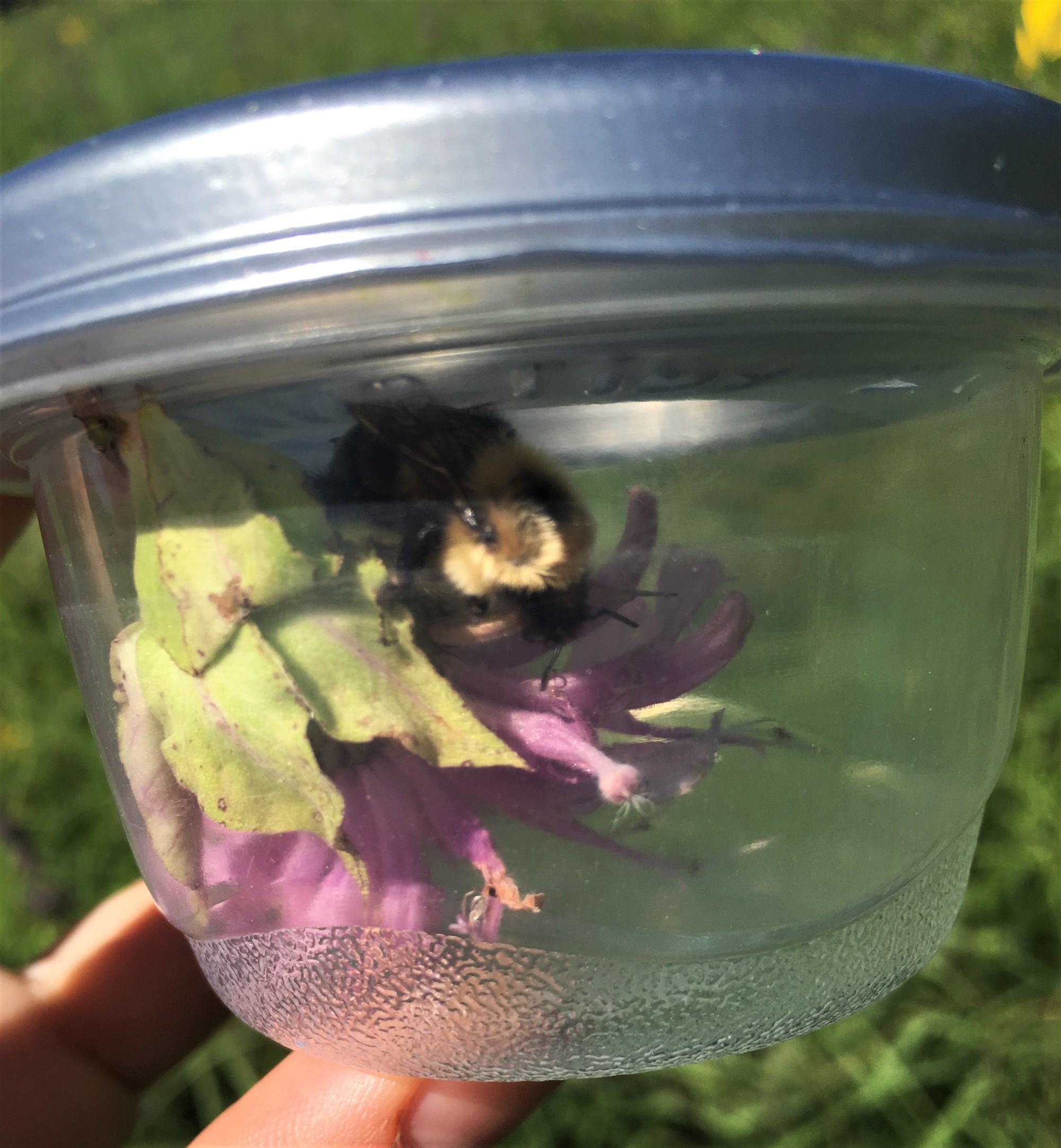A welcome break from buckthorn

by Annika Feight, central district crew member/ AmeriCorps member

One can only chainsaw so much buckthorn before twisting, thorn-laden limbs start appearing in her dreams. Thankfully, Three Rivers lets their Wildlife crew break up the monotony this summer by letting them help with bee surveys! In conjunction with the University of Minnesota Bee Lab, Three Rivers has been surveying the native bee population across many parks. Bees are essential for crop pollination and the presence of them is a good indicator of prairie and general land health.
There are several species of bumblebee that Three Rivers is keeping an eye on. What we have seen in abundance is the two-spotted bumblebee (Bombus bimaculatus), half-black bumblebee (Bombus vagans), and the Sanderson bumblebee (Bombus sandersoni). There is one native bumblebee of particular interest, the federally endangered rusty patched bumblebee (Bombus affinis) that unfortunately has not been spotted in the surveys yet. Rusty patched bees are particularly sensitive to population effects such as disease, so the absence of them indicates something is going on with the bee population as a whole. They were spotted around the parks this time last year.

Bumblebee

Honeybee
We catch the bees in little Tupperware containers, with all or part of the flower going with it. It is important to note what kind of flower the bee was visiting, too. They seem to like crown vetch and bergamot a lot.

Bee apartment
It’s surprisingly easy to catch them – they are called bumblebees for a reason! After we put them in their little bee apartments, we give them to park staff, who release them in a cheesecloth bag and apply a blue dot to them through the material. Then they get released!
The blue dot is applied so we don’t keep catching the same bees over and over again. It doesn’t disrupt them or harm them in any way. We often see already captured bees getting right back to work in the fields where we’re surveying, blue dots ablaze. And no, we don’t worry too much about them stinging us.
Other native pollinators keep the prairie abloom in addition to bumblebees. These include, of course, honeybees. We don’t capture the honeybees but they are as abundant as the bumblebees we see. We can tell the honeybees from the bumblebees because they are less fuzzy and tend to be smaller.
We also see the very beautiful hummingbird moth (Hemaris thysbe), so named because it flits around very impressively like a hummingbird. They are smaller than an actual hummingbird, but larger than a bumblebee. It’s very neat seeing them visit the prairie flowers. The largest butterfly in North America, the Eastern giant swallowtail (Papilio cresphontes), also makes an appearance on the prairie from time to time.

Hummingbird moth

Eastern swallowtail
No matter who your favorite pollinator is, we can all agree that preserving their habitat is important. The best way you can help is planting pollinator-friendly flowers, and encourage the growth of native plants in and around where you live. Even the seemingly smallest bit of grass and flowers can have an impact on the bee population. Next time you’re out and about, see if you can spot a pollinator or two!